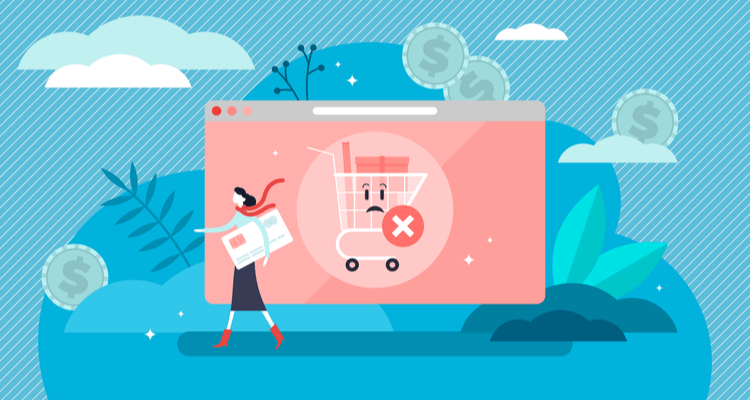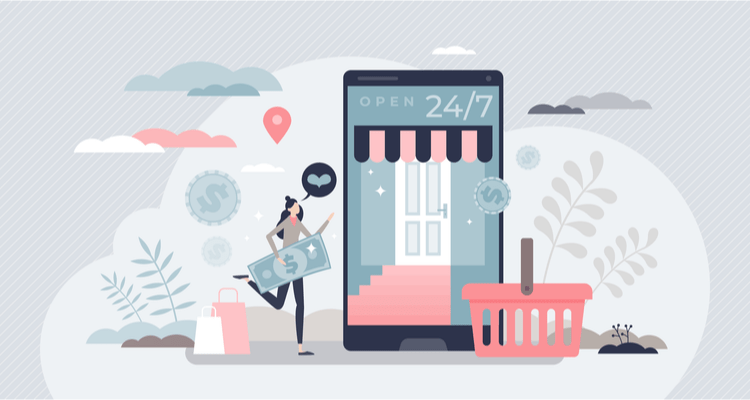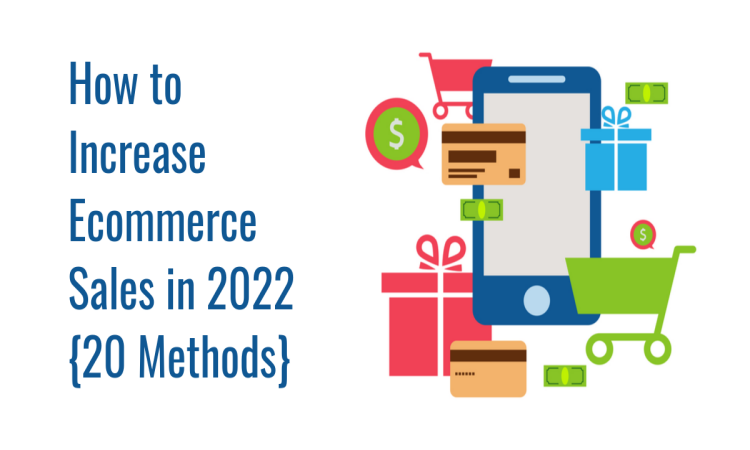It goes without saying that increases in sales bring better business outcomes, including higher revenue and more profit. There are tried and tested strategies that yield good results, whether a store is physical or digital. However, ecommerce merchants face a set of challenges particular to the environment in which they do business.
Maximizing ecommerce sales requires a strategic approach. This involves identifying common ecommerce sales mistakes, as well as implementing tactics for improving ecommerce sales.
To learn more, check out our guide on how to increase ecommerce sales in 2022.
Common Mistakes in Ecommerce Sales
There are several reasons why an ecommerce website is not performing as well as it could. Most problems fall into one of these broad categories:
- Bad UX. Pages take too long to load, the website design is unattractive and pages lag whenever users perform an action.
- Lack of core functionality. The website is missing core features, or they work poorly. Examples include navigation, search, filters, sorting, etc.
- Insufficient traffic. The website is not getting enough visitors because of poor SEO.
- Poor understanding of customers. The target audience has not been clearly defined, and there are misconceptions about customer preferences, behavior, and their total number.
Note: To know your customer, make an effort to identify your ideal buyer persona. For more information on this essential marketing tactic, read our blog post What is a Buyer Persona?.
- Wrong tools for the job. This mistake includes using ecommerce platforms and solutions that are overpriced, lacking in core features, or otherwise unsuited for your use case.
- Issues with content. Failing to utilize various content types and formats, using poorly written and poorly designed content results in poor traffic and subpar business outcomes.
- Issues with pricing. Customers are deterred because of a lack of competitive pricing or a poor value proposition.
- Poor checkout service. The webstore does not provide different payment and shipping options.
20 Methods for Improving Ecommerce Sales
Using some or all of the 20 methods described here goes a long way toward improving your ecommerce sales.
1. Utilize Dynamic Pricing
Ecommerce merchants selling to a global audience need to be aware that different regions have different purchasing power. If this difference is not reflected in the prices of the products, you stand to lose a significant number of sales. The solution is to dynamically assign prices based on the customer's region.
There are two main strategies for implementing dynamic regional pricing:
- Create a custom ecommerce website for each major region and set prices accordingly.
- Modify the user registration procedure to require proof of residency, and then dynamically adjust prices based on the user's home region through a dynamic pricing tool.
Note: Dynamic pricing solutions can be developed in-house or purchased. In either case, it is essential that they integrate with your payment processing system. As a veteran in the payment processing industry, CCBill provides a dynamic pricing feature that allows easy implementation of this functionality.
2. Look for Upselling and Cross-selling Opportunities

It is easier to sell to existing customers than new ones, a fact which you can leverage to create upselling and cross-selling opportunities. Cross-selling entices customers to buy related products in addition to the product they are interested in. Upselling encourages customers to buy higher-tier products than the one they were initially attracted to.
Typical cross-selling tactics include:
- Only attempting to cross-sell products related to the original item.
- Offering products that are significantly cheaper than the original product.
Typical upselling tactics include:
- Offering upsells later in the sales funnel, during checkout, or on approval pages.
- Not offering products that cost substantially more than the original product. A good rule of thumb is to keep the price increase within 20%.
Note: If you are looking for an upselling solution, CCBill's Upsale Promotions feature enables merchants to display upsells directly on payment forms and approval pages.
3. Make the Checkout Process Seamless
The checkout phase is arguably the most sensitive point in the customer journey because it is the point where buyers decide to exchange their hard-earned money for goods and services.
Statistics say that approximately 60-80% of shopping carts are abandoned. Disruptions during this phase are one of the leading causes of lost sales.
To make the checkout process seamless, do the following:
- Skip unnecessary fields in forms.
- Do not make customers re-enter data.
- Add a guest checkout option.
- Display a progress indicator.
- Transparently display shipping fees, taxes, and other additional costs.
- Provide customers' preferred payment methods.
4. Salvage Abandoned Carts

Abandoned shopping carts are a major problem for ecommerce merchants, but one that can often be remedied with the right measures. Customers abandon carts for a variety of reasons, often related to issues with the checkout process. But even if your checkout process is seamless, a certain percentage of customers will bounce anyway due to circumstances out of your control.
While you cannot prevent customers from abandoning shopping carts, you can still salvage some of these transactions by sending out email reminders. Throw in an extra perk in the reminder email (a discount coupon, a loyalty bonus, an extra month of subscription, etc.) to increase the likelihood of a sale. The recovered purchase can even open upselling and cross-selling opportunities.
5. Implement a Customer Support Chatbot
Quality customer support is an essential part of ecommerce. The most effective form of customer support is live chat, as it allows customers to receive near-instant responses to their queries.
Hiring a live customer support rep is not always practicable, so some businesses use chatbots for customer support. These intelligent conversation systems offer a scalable, easy-to-deploy solution for live customer support. They can be programmed to respond to common questions, perform basic on-site tasks, make product recommendations, and even leverage existing customer data to provide a personalized customer support experience.
Note: For more on chatbot benefits, consult our blog, Ecommerce Chatbots: How to Use Them to Boost Sales. And for more information on how to implement one, refer to How to Add a Chatbot to Your Website.
6. Build an Email List

Email provides a non-intrusive way to keep in touch with potential and existing customers. An email list is useful for:
- Notifying customers about new product releases.
- Reminding customers about abandoned shopping carts.
- Delivering post-purchase content such as tutorials, newsletters, and other forms of content.
- Making personalized product recommendations.
To build an email list, use the following tactics:
- Add a subscription checkbox to the checkout screen.
- Add an email capture form to the home page.
- Hold contests on social media and request an email address to enter.
Note: Emails offer a variety of sales possibilities. Go deep into the topic with our guide Ecommerce Email Marketing.
7. Use Consistent Branding
Customers are more eager to buy from merchants they perceive as reputable. One of the ways to portray your ecommerce business as legitimate and trustworthy is by employing consistent branding.
The key idea here is to influence customers to associate elements of your brand (logo, color scheme, writing style, etc.) with positive shopping experiences on your ecommerce website. Once a connection is formed between a customer and your brand, selling products becomes much easier.
8. Provide Social Proof

Another way of generating customer trust is by offering proof that other customers also had positive experiences while shopping at your store. To provide elements of social proof, include the following in your ecommerce website:
- Rating system. In a rating system, customers rate their favorite products while potential customers get social proof that the product is good and fits their needs.
- Comments section. Provide a comments section so customers can talk to each other about your products.
- Reviews. Product reviews are a great way to have customers share their experiences with your products.
9. Conduct an SEO Audit
Organic search engine traffic is a major source of ecommerce leads. By increasing organic traffic, ecommerce businesses can increase sales by a large margin. Before your start optimizing your ecommerce website for organic traffic, we recommend conducting an SEO audit using tools such as Ahrefs, Moz, Yoast, and the Google Search Console. SEO auditing helps you:
- Determine best-performing content.
- Find keywords you rank for, as well as discover new keyword opportunities.
- Detect SEO issues such as redirect loops, orphan pages, missing meta-descriptions, etc.
Once you have an overview of your website's SEO status, you can start implementing changes to improve your organic ranking, including:
- Creating and publishing SEO-friendly content.
- Compressing images and videos for faster page loading.
- Adding site maps for easier crawling and indexing.
- Adding appropriate meta-tags and meta-descriptions to key website elements.
Note: If you have a Magento-powered webstore, check out our guide for best SEO practices, Magento SEO: A Comprehensive Guide and Checklist.
10. Add Support for Mobile Ecommerce

Mobile ecommerce is on the rise, bringing with it new opportunities and challenges for ecommerce merchants. Mobile ecommerce requires you to make certain design considerations when designing your website. Consider:
- Making the website scale properly on different screen sizes.
- Adapting the UI for touch-based interfaces.
- Optimizing content for voiced-based search.
- Adding support for mobile e-wallets.
11. Promote on Social Media
It's old news that a social media presence is essential to any thriving ecommerce business. Good social media practices when promoting ecommerce stores are as follows:
- Determine your target audience's preferred social media platforms. It may be a single platform, or several platforms.
- Announce new products to generate hype. Keep followers engaged with timely content updates. Create flash sales and send followers scrambling to your store page.
- Interlink your social media pages with product pages. If a potential customer is looking into a product on Instagram, they should be able to buy it on the spot. Either set up an Instagram shop or link to the product on your online store.
- Social media seamlessly integrates with your existing ecommerce marketing strategy. Configure your CMS to publish on multiple social networks, taking advantage of marketing automation.
- Use geotargeting in social media to target local customers.
Note: Learn how to use Instagram for ecommerce.
12. Try Omnichannel Marketing

Omnichannel marketing is the practice of delivering personalized and device-agnostic marketing across different interconnected communication channels, including email, social media, website copy, etc. The idea is to provide a holistic marketing experience to potential and existing customers, increasing the effectiveness of your conversion funnel.
In practice, this means your content is thoroughly interlinked, and the transition between different touchpoints is seamless. Facebook posts should link to knowledge base (KB) articles; KB articles should link to your video library on YouTube and your YouTube videos should link to your Facebook sign-up forms, and Instagram shop, etc.
Omnichannel means that the customer and their experience is placed in the center of every marketing decision. This customer-centric approach enhances brand awareness and loyalty while improving UX and personalization.
Note: The omnichannel approach is becoming mainstream but comes with its own set of challenges. For information on what it involves and the benefits it can bring, refer to our article What is Omnichannel Marketing? Everything You Need to Know.
13. Add a Featured Product Section
Make it easier for customers to decide what to buy with a Featured Product section on your store page. Display your most noteworthy items above the fold, centered, briefly described, and accompanied by a CTA leading directly to checkout. This feature provides guidance to new prospects and expedience to returning buyers.
14. Offer Personalized Product Recommendations

Amazon popularized product recommendations as a sales tactic in ecommerce. As a result, customers now rely on product recommendations to find the items they want.
When we take this idea a step further by taking into account customer preferences, we get personalized product recommendations. Personalized product recommendations enable you to automate ecommerce customer service while increasing sales.
This ecommerce strategy requires two things:
- Customer data, harvested during registration and from user on-site behavior.
- Recommendation engine, connected to your product database.
15. Use Evocative Product Images
Product images do the brunt of conversion work in ecommerce sales. Even products and services with no concrete visual identity can benefit from an evocative thumbnail or logo, expressing its essential features.
In terms of implementation, it is always worthwhile to include images of different sizes, aspect ratios, and compression levels. This ensures that users on different devices receive the best possible UX on their platform of choice.
16. Perform A/B Testing

Slight changes to the UI can incrementally lead to better UX, the backbone of every successful sales strategy. To identify optimal changes, use extensive A/B testing. Experiment with different layouts, color schemes, CTAs, forms, and copy to figure out what matters most to your customers in terms of design and functionality. Another excellent use case for A/B testing is determining prices, discounts, and subscription fees.
Note: You can test every element of your website this way. CCBill provides an easy way to A/B test your payment forms to find the best solution for your customers.
17. Offer Discounts
Discounts are one of the most common tactics for increasing sales and customer satisfaction. Thanks to advancements in customer data collection and personalization, discounts can be fine-tuned to provide the most compelling offer.
Here are some suggested discount options:
- Limited-time offers
- Holiday and event discounts
- Personalized discounts for returning customers
- Discounts on most-sold items
- Incremental discounts based on customer actions (sharing links, becoming a follower on social media, etc.)
- Discounts for product bundles
18. Provide Multiple Payment Options

Customers have numerous payment options at their disposal, from traditional ones like credit cards and wire transfers to crypto wallets and contactless payment apps. The more of these your ecommerce website supports, the easier it is for customers to commit to a purchase. Do market research to find out what payment options your customers prefer and check with your payment service provider to see what is available.
Note: CCBill supports a variety of payment options, including Visa, Mastercard, and Maestro cards, Google and Apple Pay, Direct Debit deposits, and more. Consult the Accepted Payment Methods page for details.
19. Offer Money-back Guarantee
Building trust with customers is essential for generating long-term recurring sales. Since customers cannot interact directly with products before buying, they want to have the option to get their money back. Offering a money-back guarantee with every product purchased provides this needed layer of safety, making it easier for customers to commit to a purchase.
That said, there are some risks associated with offering a money-back guarantee option. Some customers may attempt to exploit financial, legal, and technical loopholes to get their money back while keeping the product, potentially leading to chargeback disputes.
Note: High chargeback rates cause serious damage to a business so merchants should perform due diligence and keep their chargeback rates in check.
20. Provide Post-purchase Care

Sales are essentially a dynamic process. Each successful sale instance lays the groundwork for the next sale, re-starting the conversion process. In this sense, the interaction between customers and merchants does not end at the point of sale.
The current trend is to expand the relationship in a different direction (by inviting the customer to give a shoutout on social media or record a testimonial video), or strengthen existing bonds (by offering a discount on the next purchase). These are called forms of post-purchase care. On a practical level, post-purchase care simply means you should remain engaged with the customer to increase their customer lifetime value (CLV).
Conclusion
Ecommerce sales benefit from the constant refinement in your strategies and techniques. The more strategies you implement, and the more data you collect, the better you will be at devising a plan that works in today's economy.
